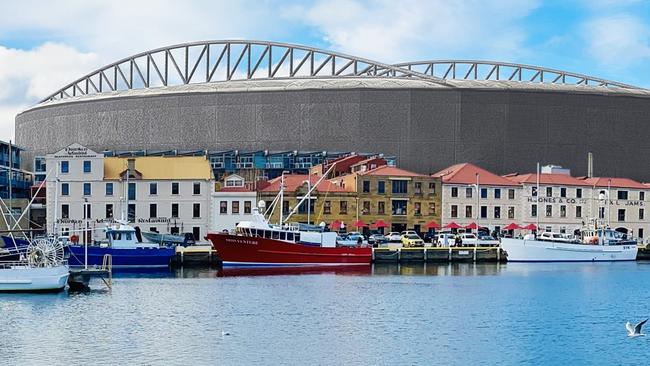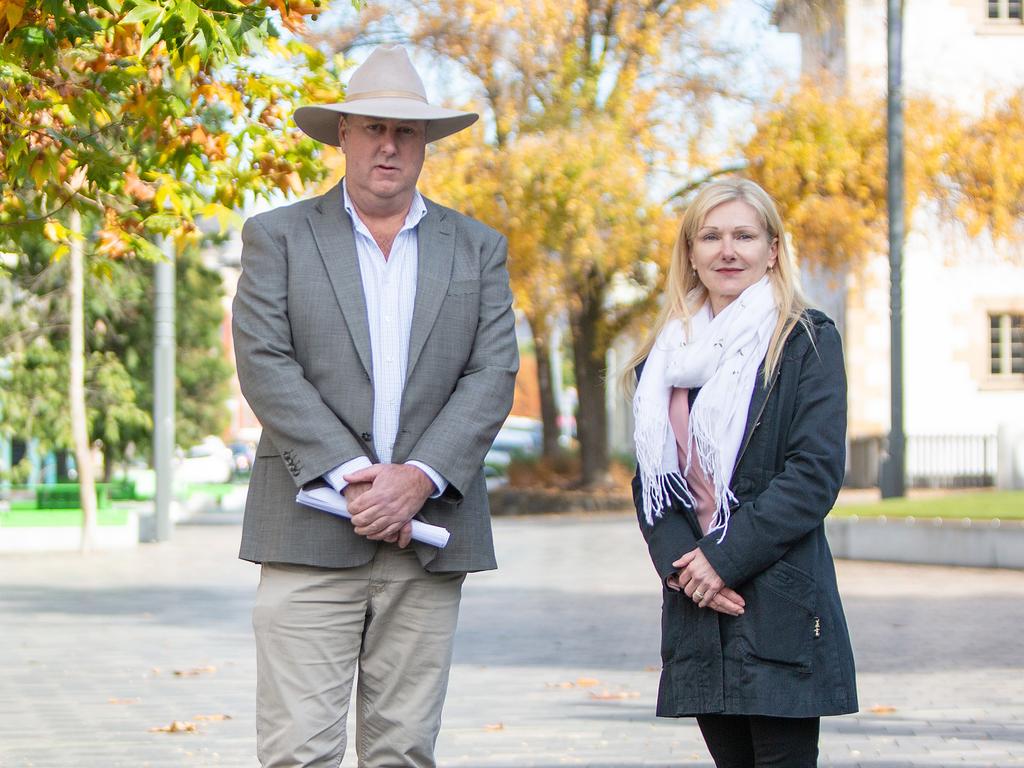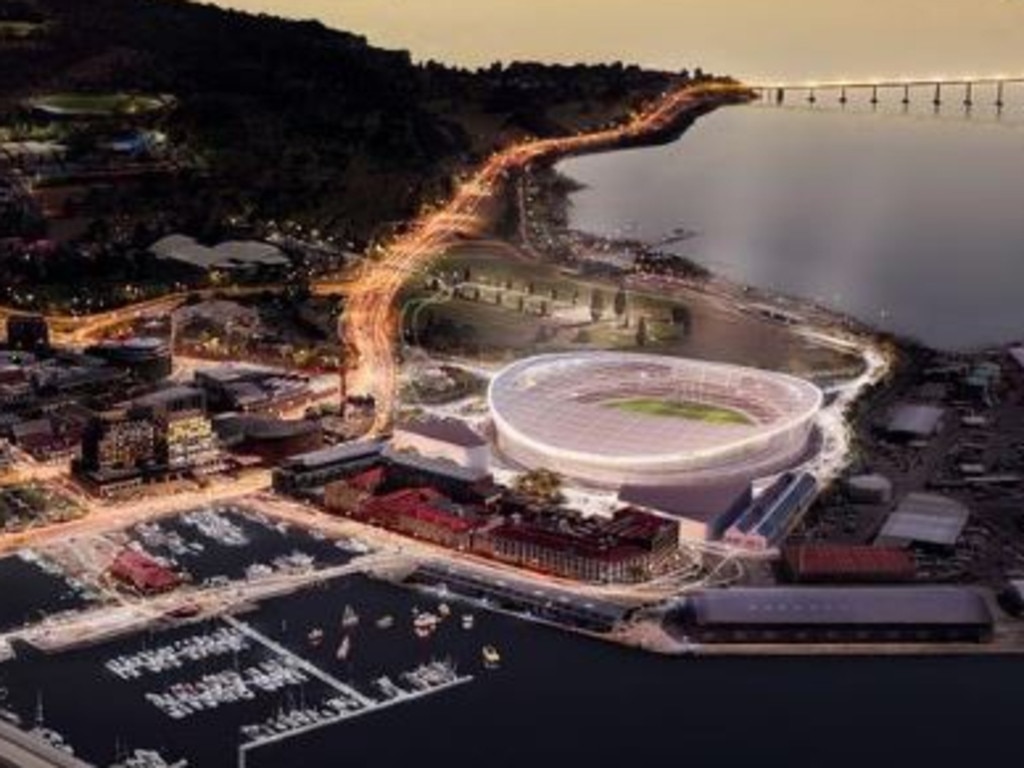On shaky ground: Hobart’s Macquarie Point AFL stadium site in ‘serious doubt’
The site for Hobart’s proposed 23,000-seat AFL stadium is only suitable for ‘lightweight structures’, with any building over three storeys requiring reinforced foundational piles.

The site for Hobart’s proposed 23,000-seat AFL stadium is suitable only for “lightweight structures”, with any building over three storeys requiring reinforced foundational piles driven up to 18m deep.
These findings, in an expert geotechnical report to the government body in charge of the Macquarie Point site, come amid rising concern that Tasmania cannot deliver the scale of stadium it has promised the AFL on budget or on time.
The Labor state opposition said the report cast doubt over any AFL stadium at Macquarie Point, a key demand of the AFL because of the site’s proximity to the CBD and waterfront. However, the government insisted the issue would be overcome.
Macquarie Point Development Corporation in late 2015 commissioned geotechnical experts Douglas Partners “to provide high level geotechnical advice on the constructability” of the site’s foundations.
DP conducted drilling and in November 2015 reported “poor... non-engineered” fill, including brick and wood fragments, persisted across much of the mostly reclaimed coastal site, as deep as 17m.
“This stratum is only suitable to support lightweight structures that are not sensitive to settlement,” said the report, obtained by The Weekend Australian.
It warned that foundational piles, such as steel or reinforced, driven to bedrock as far as 18m below the surface would be needed “for all settlement-sensitive buildings/structures”.
“This could include 1-2 storey buildings and certainly buildings that are of 3 levels or greater,” it concluded.
The Liberal government’s AFL deal commits Tasmania to a 23,000-seat, roofed stadium at Macquarie Point, a site previously earmarked for lower-scale housing, and scientific and recreational development.
It puts the cost of the stadium at $715m, with $375m pledged by the state, $240m from the federal government, $85m from borrowings against land deals on the site, and $15m from the AFL.
A state government spokeswoman on Friday said the DP report and the engineering work it foreshadowed were taken into account in the $715m costing and had been factored into the stadium business plan.
“The business case work for the multipurpose stadium identified the need for foundation piles of approximately 20 metres, given the reclaimed nature of the site,” she said.
“Need to anchor developments in bedrock is a standard consideration across all built form near water bodies, and wharf-side developments the world over.”
However, Labor said the site’s future was clearly in doubt. “This report raises serious doubts about whether it is even possible to build a 45m high roofed stadium at Macquarie Point, at least without blowing the cost out well beyond a billion dollars,” said opposition Treasury spokesman Shane Broad.
“If it is possible that a stadium can be built there, it will require an horrendously expensive engineering solution. All Premier (Jeremy) Rockliff’s hope and his $715m budget have been smacked in the face by reality.”
The government played down the challenges highlighted in the geotechnical report.
“Since remediation works commenced on site in 2015, extensive geotech investigations have been undertaken,” a government spokeswoman said.
“These do not infer that a stadium development would be unstable or could not proceed.”
The DP report also found groundwater at the site was “generally between two and five metres below surface level”, creating further headaches for any deep-foundation development.
However, the government also dismissed this issue. “The presence of groundwater has always been a matter that needs to be considered for any development at Mac Point site,” the spokeswoman said.
“This is the case for any area near a water body such as areas across (Hobart’s) Sullivans Cove, wharf-side developments around the world, and the current work to develop a new Bridgewater Bridge (north of Hobart). It is not new and is not unusual.”
Mr Rockliff recommitted to a roofed stadium. “It’s in the agreement (with the AFL),” he said.
However, it is understood there is hope within government that the AFL will agree to waive this condition to lower the cost and height of the stadium.
The AFL reiterated that a roof was a “requirement” of its contract with the government.








To join the conversation, please log in. Don't have an account? Register
Join the conversation, you are commenting as Logout